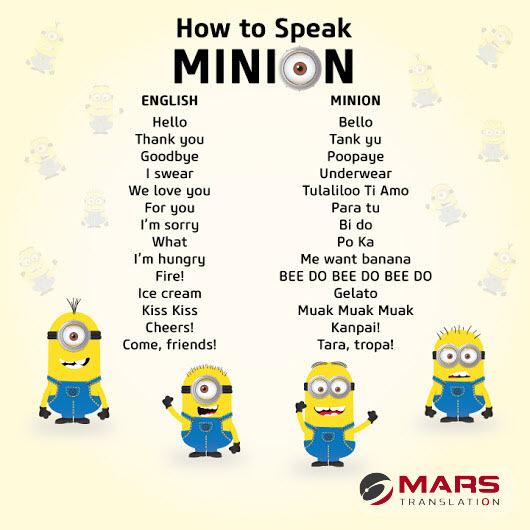Here are the five biggest digital marketing myths that you should ignore in 2017. The email is dead. Reports of the demise of email are greatly exaggerated. Opening rates are holding steady, for a start, and the fact that people can customise the number, type and subject matter of their emails means that they are getting missives that they. Sales & Marketing 〉 Marketing Marketing Myths You Should Ignore. Debra Murphy July 20, 2013. Email marketing can enhance your relationship with your subscribers and drive your revenue. 6 Email Marketing Myths You Can Ignore written by John Jantsch read more at Duct Tape Marketing Email marketing has been around for a long time, and consequently, people have developed a lot of opinions about what works and what doesn’t. However, as the digital marketing landscape has changed, s.
Newcomers to the networking platform LinkedIn make every mistake in the book. But they can sidestep their spammy promotional ways -- if they can banish certain misconceptions from their minds.
Consider for instance the question of why 76 percent of CEOs check LinkedIn daily. Trust me, it’s not for the viral Dilbert memes.
In reality, LinkedIn remains simply the best place to build relationships and make sales. Half of all users are likely to buy from a company they engage with on the platform, and 80 percent agree that company connections provide opportunities to enhance professional decision-making. Even better, LinkedIn members have nearly twice the buying power of Facebook users. But many small business owners and startup CEOs face just one problem with the platform: They’re using it wrong.
Linking up with the best prospects
Startups have to be scrappy with marketing and push-marketing activities that lead to direct returns, not just brand awareness. Having worked with and surveyed thousands of small business owners and startups, I’ve found that their biggest marketing struggle is reaching potential customers, which is where LinkedIn shines if used correctly.
Related: 6 Tips for Finding the Right Prospects and Getting in Front of Them
But many LinkedIn newcomers make every mistake in the book, misled by the three most common misconceptions about the platform. Here’s how companies can sidestep those false ideas and take advantage of the benefits LinkedIn marketing offers:
Myth No. 1: thatLinkedIn is only for low-grade sales pitches, that LinkedIn is infamous for spam and unsolicited sales pitches. In truth, lots of networkers are quietly developing lasting business relationships, especially in the form of LinkedIn discussion groups, which account for 96 percent of posts and 86 percent of conversions on the platform. Startup leaders should approach LinkedIn with the same strategic attention they bring to face-to-face networking.
Tom Swip, president and CEO of Swip Systems, used this method to nurture relationships and move prospects off LinkedIn and into real-world business conversations: He did this by targeting his ideal clients with a LinkedIn group called Midwest Manufacturing Leaders. Leading this group keeps Swip and his brand in front of prospects without being spammy or pushy; that connection has resulted in a number of new clients and continued brand-building.
Myth No. 2: that LinkedIn is only for connecting with offline contacts. Stranger danger is real for schoolchildren, but for entrepreneurs online? Most users lean toward connecting with strangers on the platform -- and opting out forecloses a lot of possibilities. Businesses may feel strange reaching out to new people, but overcoming that discomfort enables them to make connections that help their companies expand.
The Zurich Insurance Group, for example, used LinkedIn activity to position its head of financial institutions, Chris Taylor, as an expert. Using strategic InMail messages, updates and connection invites, the company launched a three-month campaig that increased Taylor’s LinkedIn connections by more than 400 and created a flood of inbound customer requests for the insurer.
Related: Stranger Danger: 3 Good Reasons to Reject a LinkedIn Connection Request
Myth No. 3: that LinkedIn is about you. In fact, “me, me, me” is a bad marketing strategy on any platform, and it’s especially bad on LinkedIn. Seventy-four percent of a group of U.S. residents surveyed in one study said they trusted educational content from businesses on particular topics but that their trust numbers dropped drastically once those companies pushed for a sale.
To avoid this mistake, businesses should talk about other organizations’ developments within the space to show they’re interested in the big picture, not just their own companies.
Email Marketing Myths You Should Ignore Something

Dan Demers of ReMission Consulting used this approach, for instance: He dropped his promotional content and adopted a multiple-touchpoint process to nurture trust with his audience.
Email Marketing Myths You Should Ignore Someone
He began seeding high-quality content through direct messages to demonstrate understanding of his prospects’ problems and provide frameworks for solutions. As a result, his pipeline grew substantially, and his average sales cycle dropped from 18 months to mere weeks.
Related: 5 Ways to Stop Embarrassing Yourself on LinkedIn
As customers across all platforms become savvier about modern marketing, it’s even more important that your business represent people it trusts, respects and like.
So, ignore these common misconceptions, and use your LinkedIn profile to identify cold prospects, develop relationships and position yourself as a known and trusted professional within your industry.
Marketing can be all about trends, but you should always think for yourself, too. As content is shared across platforms, the message it sends out tends to amplify, especially if it gets picked up by a large audience. This is a great thing in most cases, but one downside is that false information can spread like wildfire. The “fake news” phenomenon isn’t confined to the world of international politics, it also infects the world of marketing, too. Here some of the most common marketing myths that have somehow found their way into our collective psyche.

You need to brand everything, all the time.
Brand awareness is important and being consistent will generally do you a lot of favours, but there is such a thing as overkill. You don’t really need to have your brand logo on everything and in some cases, overdoing it can ruin the overall impression. Even if you’re logo is super stylish, plastering it over every element of your business isn’t necessary, especially when it most likely displayed on your website, email headers and other media. It’s a fine line, but when you step over it, you go from looking like a professional business, to somebody who is trying way too hard.
There’s No Such Thing As Bad Publicity
This simply isn’t true. It is definitely possible to turn negative attention in to a potential opportunity if you have the right kind of strategy but being famous for the wrong reasons will ultimately come back to bite you. Companies that are given a lot of coverage by the media for their poor quality service or for scandals they’re involved in rarely recover unless they’re already very well established. For small and medium sized businesses, poor publicity can signal the end of the road.
More Contact With Customers Automatically Equals More Sales
Quite simply, it doesn’t. In fact, for older customers and those who prefer the traditional approach of browsing products when they need them, rather than allowing potential suppliers to contact them directly, too much contact can be something of a deterrent. Bombarding people with emails and Facebook messages is irritating, plain and simple. It looks desperate, nobody really pays attention after the second or third time they’ve seen the message and eventually, your campaign just becomes background noise. Never hassle your customers, its disrespectful and it won’t drive your sales effectively.
Campaigns Need to Be Dramatic
Before you roll out your next campaign, ask yourself if you’re being driven by the brief or your own professional vanity. Marketing is there to do a job. To get people to convert. There may be room for shock tactics, innovative technology and vivid imagery, but in many industries, people like to stick with what they’re familiar with. There’s a good reason for this. It works. Office supplies companies or drainage experts probably don’t need to employ enigmatic street sculpture or living art pieces to get more customers, they’re more likely to have success by simply demonstrating they’re good at what they do. Understatement can be every bit as powerful as drama in marketing, the key is to understand the audience before you start assembling the details.
You Must Stand Out from the Crowd
Email Marketing Myths You Should Ignore People
This isn’t always true. It’s not especially glamorous and you probably won’t feel like a dynamic, marketing expert for doing so, but simply looking at the existing competition and creating a similar brand or product will often be far more effective than trying to be deliberately outlandish for its own sake. Some of the most successful and longest running businesses have managed to stay successful, simply because they stick to the “rules” of their industry. Familiarity and blending in with the established norms can allow you to slowly build up a reputation and a customer base over time, rather than trying to do everything all at once.
Email Marketing Myths You Should Ignore Others
Your Industry Reputation is More Important Than What Your Customers Think of You
Some companies lose sight of their goals so badly, they end up spending more time trying to establish a reputation amongst their competitors than they do on customer care. Industry reputation does matter, but nowhere near as much as some marketing executives would have you believe. If your business is turning a profit and your customers love you, you are doing almost everything right. Don’t be tempted to change tactics just to fit in or establish a better reputation amongst the other businesses in your field. It’s great to have allies who will share your content and speak highly of you, but unless they’re willing to pay you directly, they should always come second to your customers.
Make Sign Ups and Subscriptions Mandatory
This is one of the quickest ways to lose a whole section of your potential customer base quicker than you can say “spam.” Pushy techniques like this might be becoming more common, especially online, but many customers simply shut down when they feel as if they are being forced into something. Aim to make them want to sign up to your mailing list or to accept notifications from your site, rather than trying to convince them it really is the only way forward. Giving customers a choice shows confidence, not only in the quality of your marketing copy, but also in the standard of the products or services you offer.
Connect With People Emotionally
This can work extremely well for certain types of business, but if you’re a company that works in a particularly emotionless niche such as the building trade, agricultural machinery or medical equipment, it’s probably better to try and sell your products based on their build quality and performance, rather than trying to convince your customers you’re on the same wavelength as them. Simplicity and clarity is generally more effective in these kind of areas because the customer base are very different to a wider public market. There may be room for an element of narrative driven content but sticking to the facts is often far more effective.
